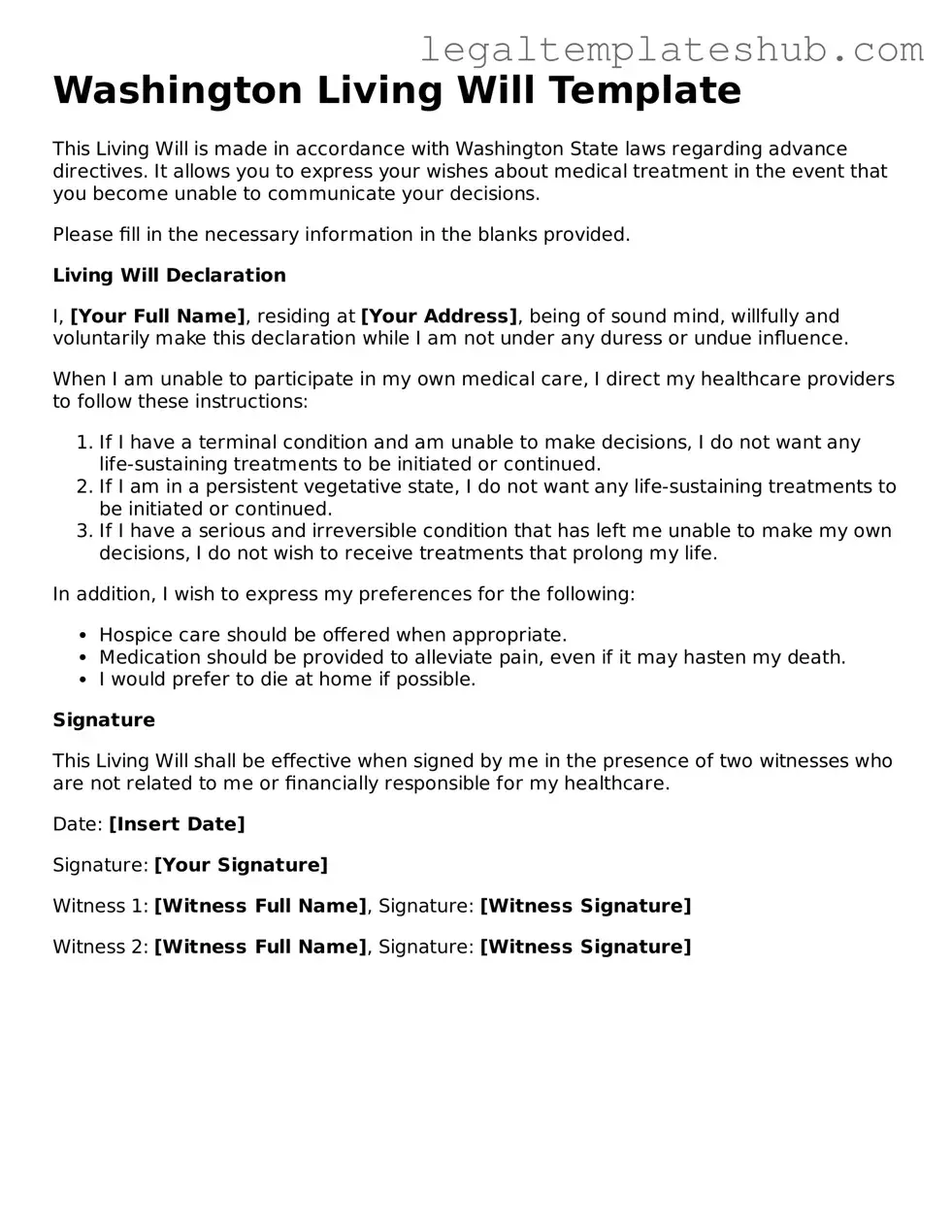Printable Living Will Document for Washington
A Washington Living Will form is a legal document that allows individuals to outline their preferences for medical treatment in the event they become unable to communicate their wishes. This form ensures that your healthcare decisions are respected, providing clarity for your loved ones and medical providers. To ensure your wishes are known, consider filling out the form by clicking the button below.
Access Editor
